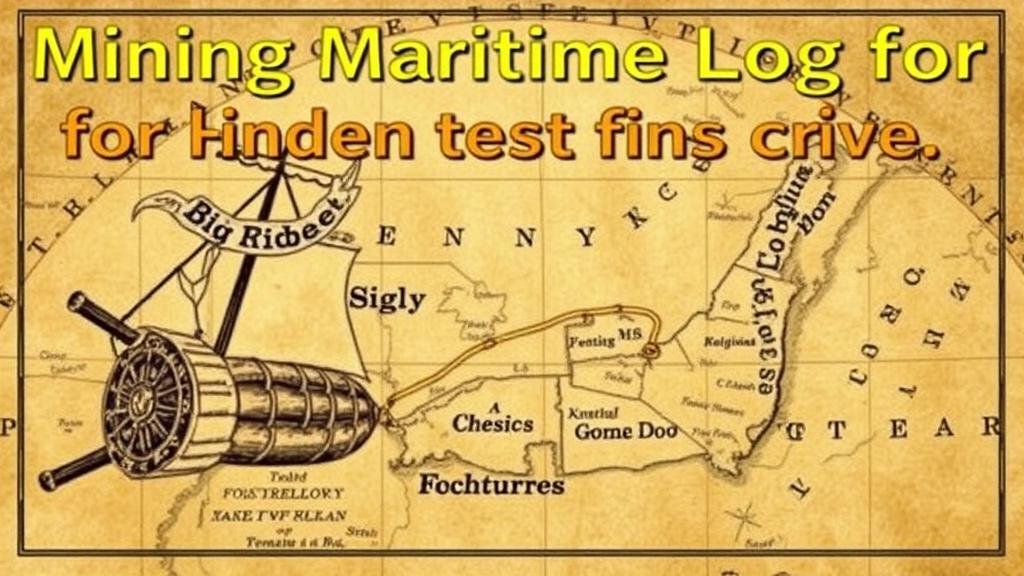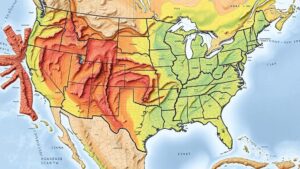Mining Maritime Logs for Hidden Wealth Along Ancient Trade Routes
Mining Maritime Logs for Hidden Wealth Along Ancient Trade Routes
The exploration of ancient maritime trade routes has emerged as a captivating field of study for historians, archaeologists, and economists alike. This article examines how the analysis of maritime logs can reveal significant economic treasures from ancient trade practices. By utilizing these documents, which date back as early as the 5th century BCE, researchers can uncover hidden wealth that has significant implications for understanding economic systems of the past.
The Importance of Maritime Logs
Maritime logs, also known as ships logs or journals, are records kept by ship captains that detail everyday occurrences at sea, including cargo manifests, routes taken, weather conditions, and crew activities. e logs serve as critical primary sources for understanding the commercial activities of ancient civilizations. For example, the logs from ancient Phoenician traders illustrate the movement of goods across the Mediterranean, showing how they not only traded commodities but also facilitated cultural exchanges.
Methodology of Mining Maritime Logs
Mining these logs entails both qualitative and quantitative analysis. Researchers utilize methodologies from various fields, including data analysis to identify patterns and trends. process typically involves the following steps:
- Collection of Maritime Log Data: This includes the digitization of historical records from archives.
- Data Cleaning: Ensuring the datas accuracy by rectifying historical inaccuracies and inconsistencies.
- Analytical Techniques: Employing statistical tools and software to analyze trade volumes, routes, and the economic impact of these logs.
For example, the study of the logs retrieved from the shipwreck of a Roman merchant vessel off the coast of Sardinia in 2016 provided insights into the regularity of trade routes and the types of goods exchanged, such as olive oil and wine.
Case Studies of Ancient Trade Routes
Several ancient trade routes, such as the Maritime Silk Road and the Spice Route, have been extensively mapped using maritime logs. These pathways facilitated trade between the East and West, fostering significant economic and cultural exchanges. Notably, the Maritime Silk Road is estimated to have connected 30 different ports, with total goods traded worth approximately $200 billion in todays currency.
- The Maritime Silk Road: This route linked China with the Mediterranean, allowing for the flow of silk, spices, and precious metals.
- The Spice Route: Connecting India and Europe, this route was pivotal in the trade of spices that were worth more than their weight in gold.
Economic Implications of Mining Maritime Logs
Discovering economic trends through maritime logs not only enriches historical understanding but also provides key insights into contemporary trade practices. By analyzing ancient logistics, modern economists can draw parallels between ancient and current supply chain dynamics. For example, the concept of “just-in-time†inventory can be traced historically to the efficient routing of merchants, as described in historical logs.
Plus, a 2019 study published in the Journal of Maritime Archaeology highlighted a correlation between seasonal trading patterns documented in maritime logs and the cyclical economy of the ancient Mediterranean, revealing how merchants adapted to fluctuating market demands.
Future Research Directions
Future research opportunities abound in this field. There is potential for advanced technologies such as GIS (Geographical Information Systems) and machine learning algorithms to further dissect maritime logs for hidden insights. e innovations could help researchers visualize ancient trade routes, correlate them with climatic changes, and assess their impacts on economic behavior.
Conclusion
Mining maritime logs offers a unique window into the economic practices of ancient civilizations, creating an intersection between history, trade, and economics. As technology advances, the ability to extract and analyze these valuable documents will expand, revealing even greater depths of historical knowledge. Researchers, historians, and economists must collaborate to maximize the academic and practical benefits derived from ancient maritime logs.
Actionable Takeaways:
- Engage with archives that hold historical maritime logs for data collection.
- Use modern data analysis tools to derive insights from historical shipping records.
- Investigate the economic implications of ancient trade practices on current market dynamics.



